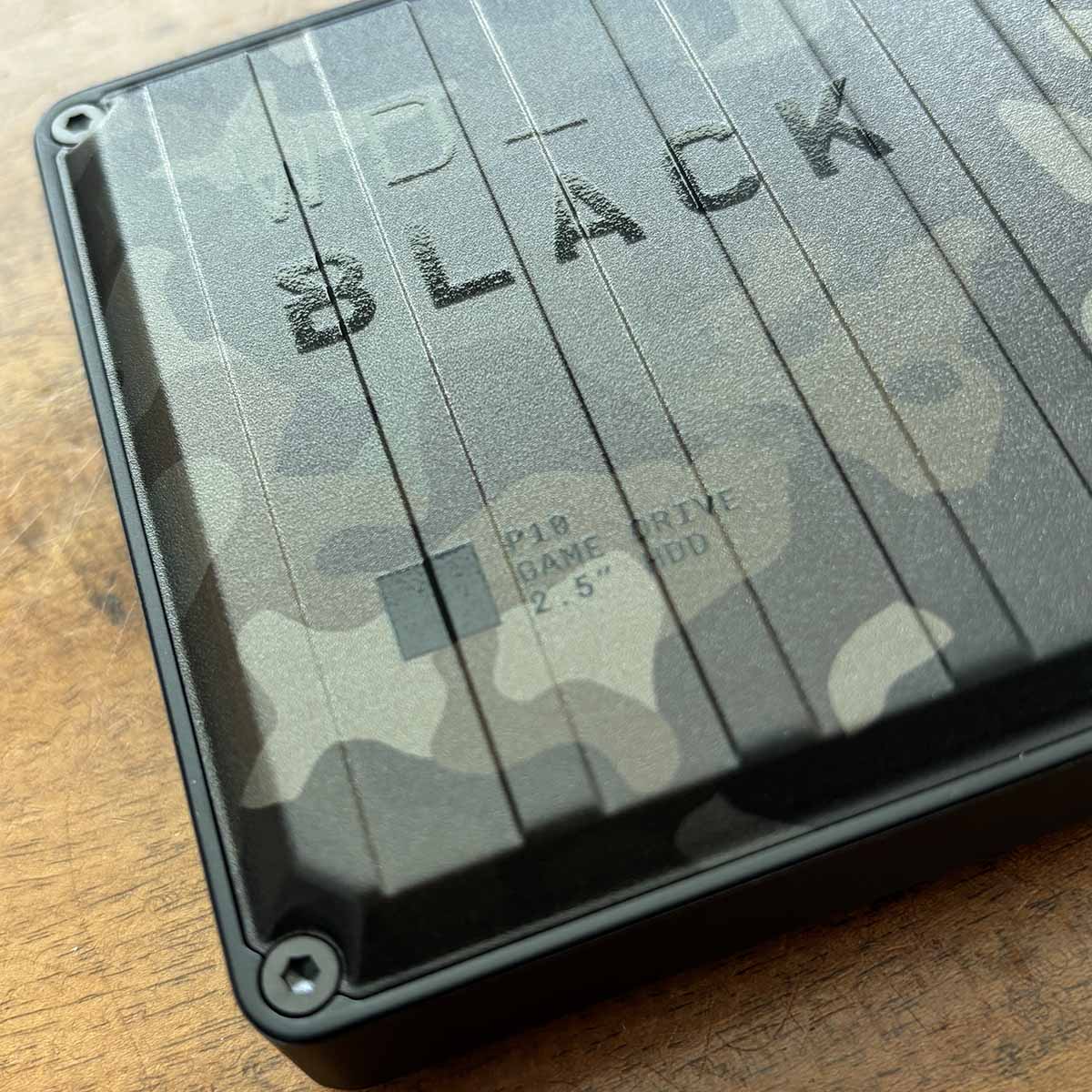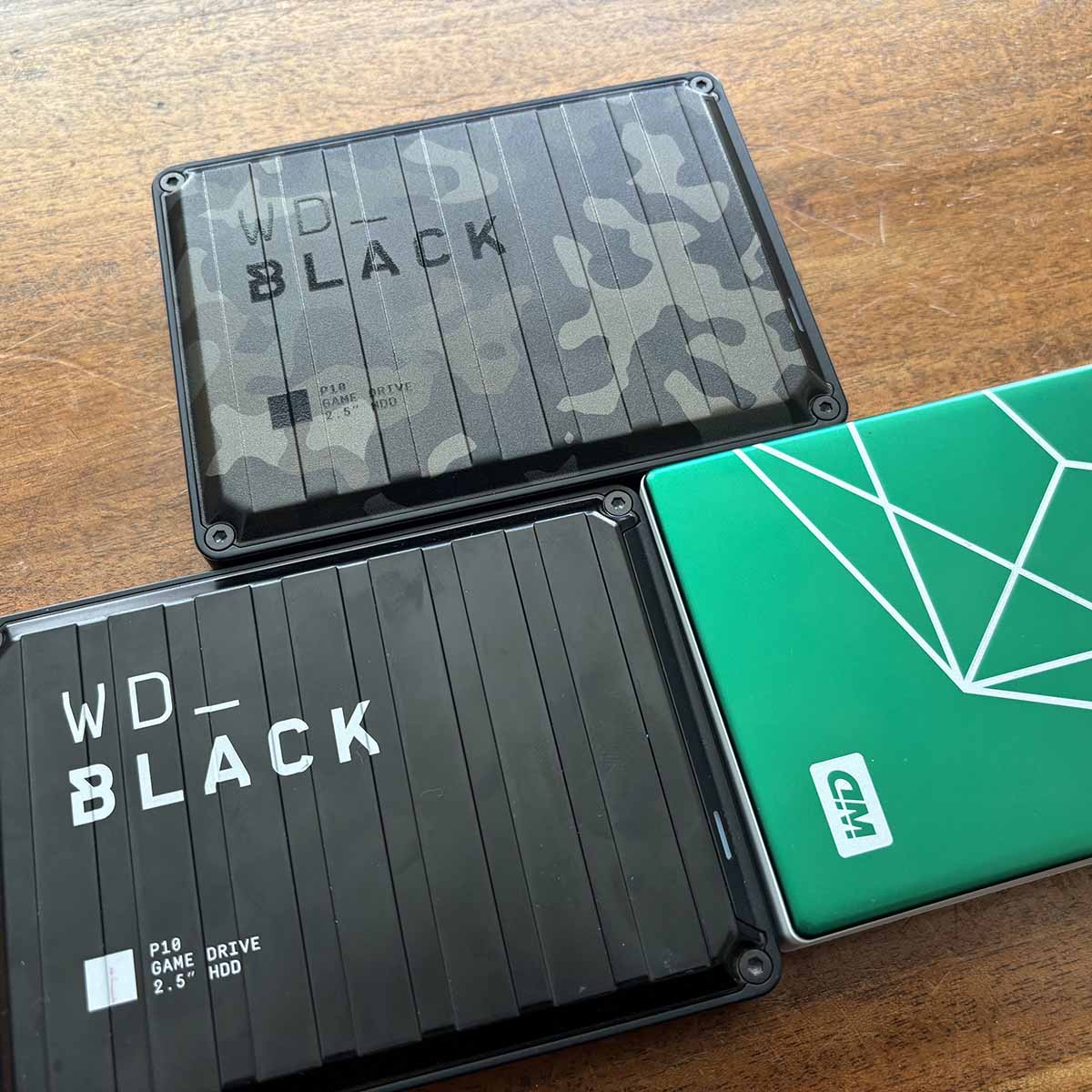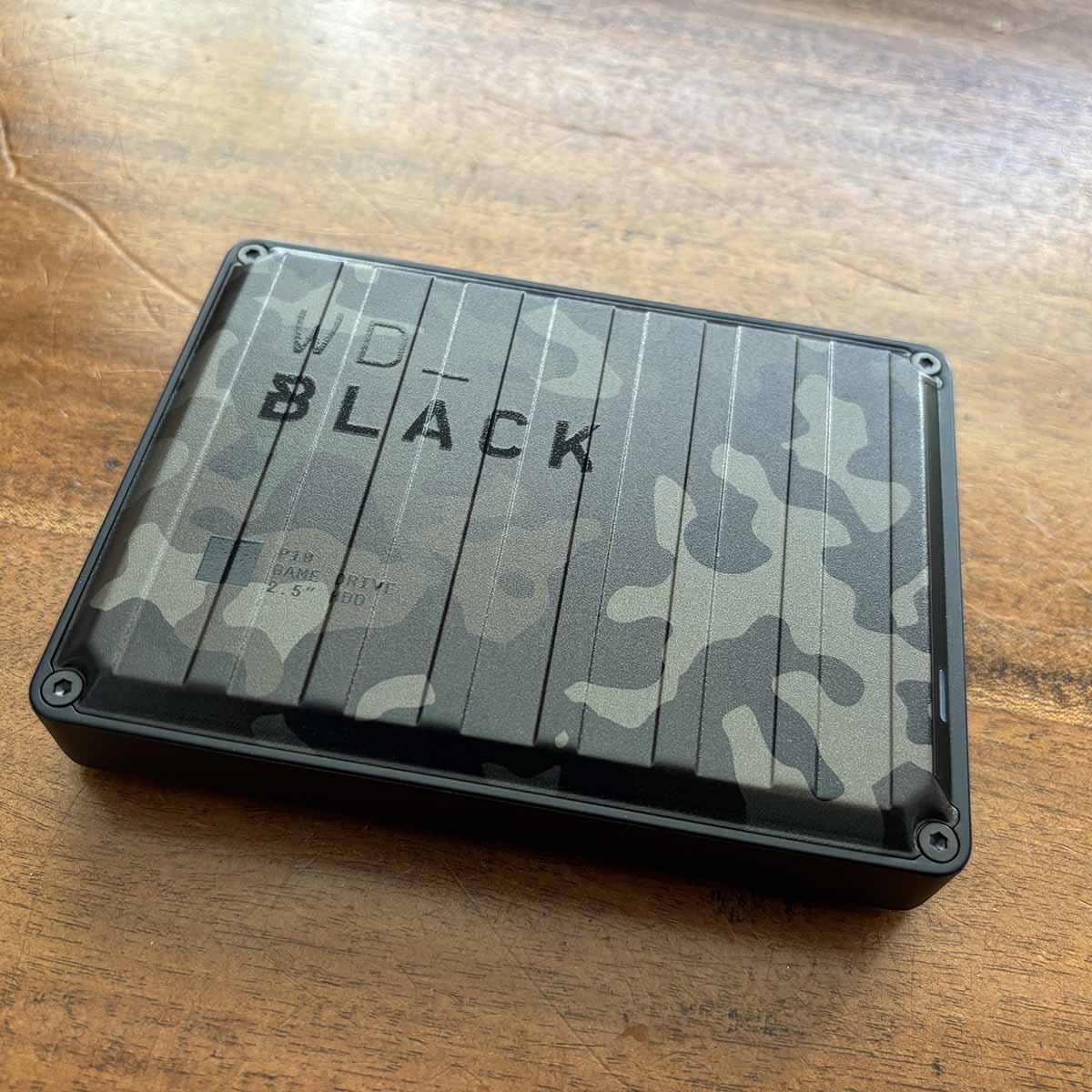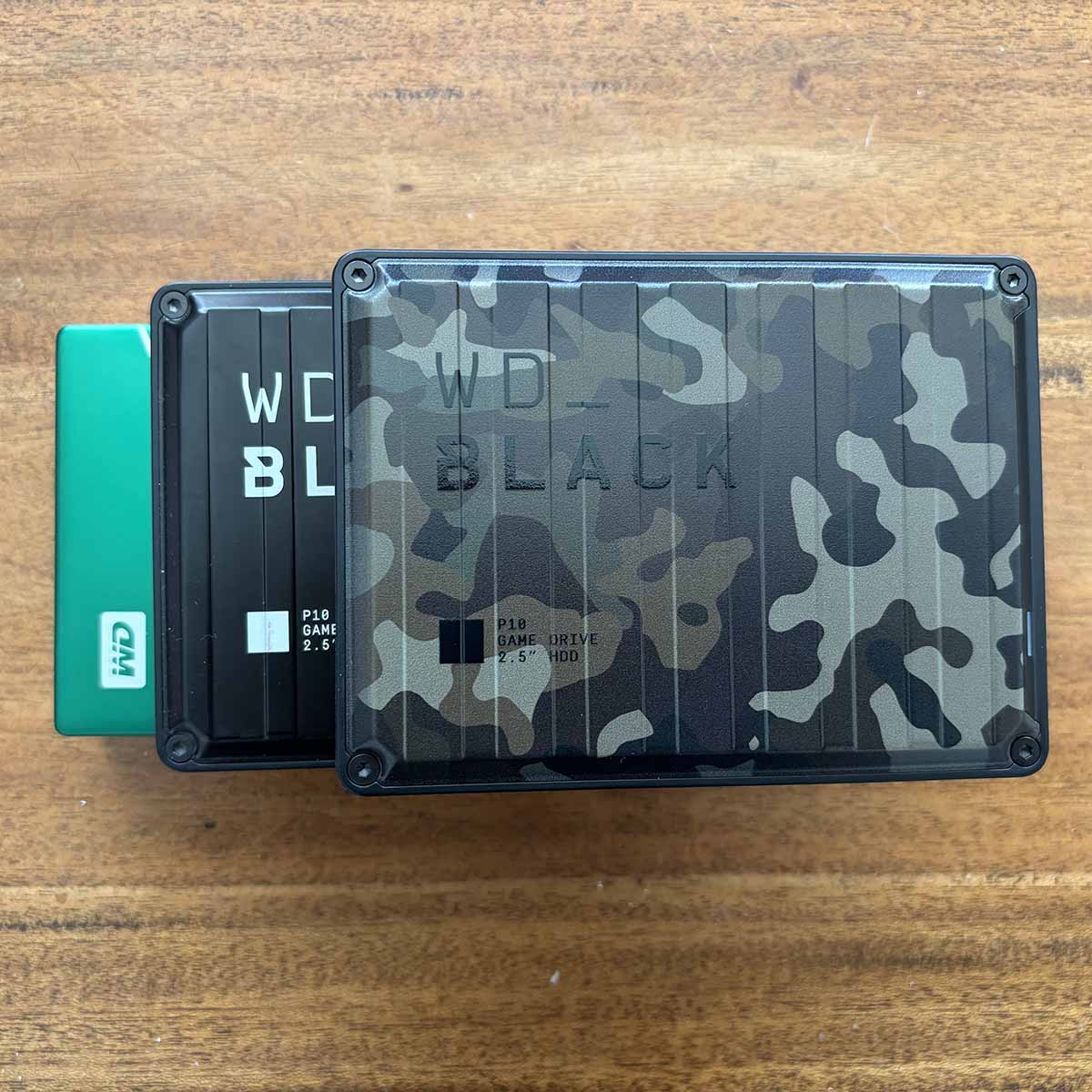There are things in life that you can never have enough of. Time, money, good friends, and computer storage. I jest on the last one, but there has been many an occasion that I’ve wished for more TBs for my ever-increasing media libraries. NAND-based storage isn’t the bargain it once was, leaving the door ajar for the humble mechanical spinner, especially in external form. This is why I’m having another look at the WD Black P10 Game Drive, now available in a 6TB capacity and new colour ways for around £150.

WD Black P10 Game Drive 6TB
£150 / $170
Pros
- Consistent performance
- Quiet under load
- Good capacity choice
- Distinctive design
Cons
- Much slower than SSD
- Micro-B feels old
Club386 may earn an affiliate commission when you purchase products through links on our site.
How we test and review products.
WD isn’t short of external storage options that house 2.5in mechanical spinners. There are 16 options to choose from, ranging from 1TB through to 6TB. Geared towards gamers, the P10 Game Drive arrives in a distinctive hard-shell enclosure that’s certified for use with both Xbox and PlayStation consoles. To be clear, WD recommends it as an offline store for PS5 and Series X/S games; it’s not intrinsically fast enough to play the hottest games directly.
Design

Speaking of speed, the P10 Game Drive has maximum sustained read and write speeds of 130MB/s, and it’s one of the very few 2.5in drives WD states throughput on. Offered in a standard black enclosure in 2TB, 4TB, 5GB, and 6TB capacities, the portfolio has been extended to include pink, Call of Duty (2TB), and the Camouflage model I have here.
Those of you looking for a more spacious and faster external drive are pointed in the direction of the mains-powered 3.5in D10, offered in up to 12TB and sporting a tasty 250MB/s throughput.

My 6TB Camo drive feels reassuringly solid in hand. I like the colour scheme, quality of materials, and ridged pattern across the top. Keeping costs in check, WD opts for a tough ABS plastic casing rather than dearer aluminium, and by doing so limits the potential of the chassis to expel heat. Not that it gets hot, mind you, as it barely registers as warm under 20 minutes of sustained writes. A monitoring utility such as CrystalDiskInfo reinforces my thoughts of the relatively cool-running drive by reporting a maximum internal temperature of 52°C.
It so happens I also have a black 5TB version. The geek in me recognises that both enclosures are not exactly the same, as the 6TB model is 2.3mm taller, which is immediately apparent when putting them side by side, suggesting that drives of different platters are being used within. Backing up this assertion is a slight increase in weight, from 235g on the 5TB to 244g here. I’m splitting hairs, of course, but it’s good to know.
Way back when, it used to be the case that standard 2.5in mechanical drives operated at 5,400rpm and performance models at 7,200rpm. Advances in capacity have actually reduced rotational speeds, with the 5TB and 6TB models spinning at 4,800rpm. There’s nothing untoward here as rival manufacturers are doing the same thing, ostensibly to keep both power and heat in check. Coming from using SSDs almost exclusively, I still notice the platters spinning up and down, but it’s nothing I would deem as off-putting.

2015 is calling and wants its drive interface back. WD uses a Micro-B connection that translates to an internal USB 3.2 Gen 1 (5Gbps) interface that’s plenty fast enough to service the drive’s performance. I’d definitely prefer a USB-C connection in 2025 – it takes up less space, for starters – but this is no big deal.
WD bundles in a 60cm Micro-B-to-USB-A cable in the box and provides a three-year warranty, extendable by a year if you take advantage of the current promotion, though you must buy it from the WD Store.
Unlike other models, there’s no additional software present, which makes sense to me as it’s a game repository drive first and foremost. Note that once connected to your computer or console the small white activity light remains on at all times.
Performance
Putting WD’s throughput claims to the test, the drive achieves a synthetic read speed of 129MB/s and 127MB/s write when running the latest iteration of CrystalDiskMark. Considered the Achilles heel of mechanical storage, random accesses are orders of magnitude slower, coming in at 0.5MB/s. Here’s where SSDs have a significant leg-up, but I don’t see this as too much of an issue as I envisage the P10 Game Drive to be a general store for larger files, be it gaming or general media.

I then transferred a 300GB folder comprised of mixed file sizes, though generally veering on larger ones, mimicking how I expect enthusiasts to use this drive. Averaging around 120MB/s write, and more importantly consistent from start to finish, the WD Black P10 Game Drive 6TB does exactly what it says on the tin.
Conclusion
The utility of external mechanical drives has been put into focus with the glut of high-capacity solid-state models now plying the market. Offering superior performance and better robustness, one questions the need for drives such as the WD Black P10 Game Drive in 2025.
Having used a 6TB model for a week or so, there’s no getting around the fact that external mechanical storage offers a better bang for your buck, coming in at around £25 per TB instead of £50+ for SSDs. Numerous applications don’t need explicitly high speeds to function properly, either, so drives like this still make sense as a file repository. A case in point, even my largest Blu-ray 4K remuxes demand less than 20MB/s throughput, meaning SSDs operating at 1GB/s are pure overkill.
Thinking about it in sum, the WD Black P10 Game Drive 6TB Camouflage makes sense to me if on a deal. If you see one for, say, £125 or so, feel free to snap it up and extend game- and media-centric storage.


